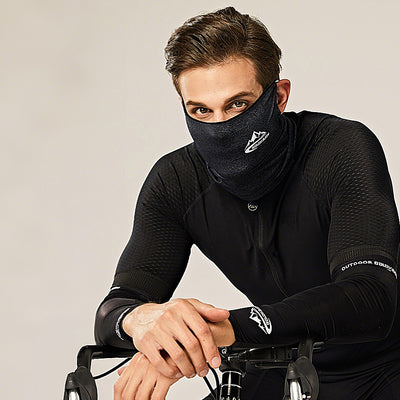Cycling Gloves Temperature Guide: How to Choose for Different Temperatures?
Cycling Gloves Temperature Guide: How to Choose for Different Temperatures?
Choosing the right cycling gloves is more than just a style statement. Gloves play a key role in protecting your hands, improving grip, and keeping you comfortable during rides. The temperature you cycle in greatly affects what type of gloves you should wear. This guide breaks down how to pick the best cycling gloves for different temperatures so you stay comfortable on every ride.
Understanding Cycling Gloves and Temperature
Cycling gloves do more than cushion your hands from vibrations. They shield your skin from weather, assist with sweat control, and maintain your hand dexterity. When temperatures change, certain glove features become more or less important.
Key features to consider include insulation, material, and fit. Insulation keeps your hands warm in cold weather, while breathable materials prevent overheating. A proper fit ensures you have good control and comfort on the handlebars.

Gloves for Warm Weather
When the temperature rises, cycling gloves need to focus on breathability and lightness. Warm weather gloves use thin, moisture-wicking fabrics that allow sweat to evaporate quickly. This prevents your hands from feeling sticky or sweaty, which can cause discomfort or slipping.
Lightweight designs without thick padding help enhance ventilation and keep your hands cool. Fingerless gloves are popular choices as they provide protection to your palms while letting your fingers stay free.
Gloves for Mild Cool Weather
Mild cool weather calls for a balance between warmth and breathability. In these conditions, gloves should keep hands warm without causing excess sweating. Look for gloves that combine light insulation with mesh panels or breathable fabrics.
Layering gloves is also an effective option during mild cool spells. Wearing thin liners beneath a slightly insulated pair lets you adjust quickly if the temperature changes. This flexibility ensures your hands stay comfortable whether the morning starts cool or warms up by midday.
Gloves for Cold Weather
As temperatures dip, insulation becomes essential. Cold weather cycling gloves often use fleece or Thinsulate liners that keep hands warm without adding too much bulk. These gloves also feature windproof and water-resistant materials to shield your hands from chilly winds and light rain.
Windproof fabrics help reduce heat loss caused by wind chill, while water resistance prevents wet gloves from robbing your hands of warmth. Look for gloves with reinforced palms for extra grip when the roads are tougher.
Gloves for Freezing Conditions
When temperatures freeze, extra insulation is necessary. Gloves for freezing conditions use thick thermal materials and sometimes include gel padding for added comfort. Some cyclists combine insulated gloves with thin liner gloves to maximize warmth.
Mittens can be the best choice here as they allow your fingers to share heat more efficiently than separate fingers do. The extra bulk around fingers helps protect from frostbite and extreme cold.
Gloves for Extreme Cold
Extreme cold presents a serious challenge that requires specialized gloves. Materials like Gore-Tex and other breathable waterproof fabrics protect against snow and ice while keeping sweat from building up inside.
Gloves designed for harsh climates often have multiple layers of insulation along with adjustable wrist closures to prevent cold air from entering. Tips for maintaining hand warmth include keeping gloves dry, using chemical warmers, and taking breaks to warm your hands.

How to Choose the Right Gloves for Your Needs
Start by assessing your local climate and the typical temperatures during your cycling seasons. If you ride mostly in warm weather, prioritize lightweight, breathable gloves. For cooler environments, look for insulation and weatherproof features.
Match glove features to specific temperature ranges. For example, light fingerless gloves work well above 70°F, mild cool weather gloves are best for 50°F to 70°F, cold weather gloves suit 32°F to 50°F, freezing condition gloves fit 14°F to 32°F, and extreme cold gloves handle anything below 14°F.
Comfort and fit matter just as much as temperature protection. Make sure gloves fit snugly but do not restrict circulation, which can make hands colder.
Conclusion
Choosing the right cycling gloves based on temperature improves your comfort and performance. Understanding how gloves protect your hands and what features matter in different weather helps you make smart choices.
From breathable warm-weather gloves to insulated mittens for freezing conditions, the right gloves keep your hands safe and comfortable wherever you ride. Pay attention to temperature ranges, materials, and fit to enjoy every cycling adventure.
Stay warm, stay cool, and enjoy the ride with gloves designed for the weather you face.






